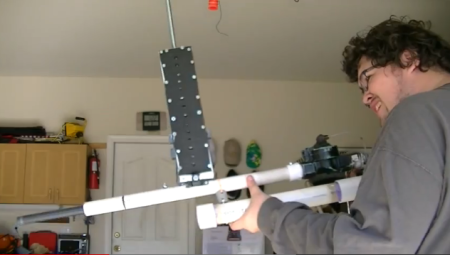
So if you had to launch a car through these goal posts how would you do it? Certainly not with a slingshot (although we might have gone with a steam-powered catapult a-la an aircraft carrier). That maroon car with the white stripe is about to make the flight thanks to a very powerful pneumatic launcher.
We don’t usually attend the demolition derby, so this sort of thing is new to us. And we were even more surprised to find that this isn’t strictly a novelty act. The system is actually how some of the more dangerous automotive stunts are done for the movies. This launch sends the car in a graceful arc that is right on target and reminds us of the cliffhanger stunts from The Dukes of Hazzard (TV, not the recent movie). But if you’re a director looking for a horrific car accident, the rig can be altered to send the car spiraling through the air. Sounds like the record is nearly eight turns while airborne.
We don’t have any extra cars to launch, so we’ll stick to making the confetti fly.
Continue reading “Pneumatic Car Launcher Is Actually More Than Just A Hacker’s Fantasy”

















